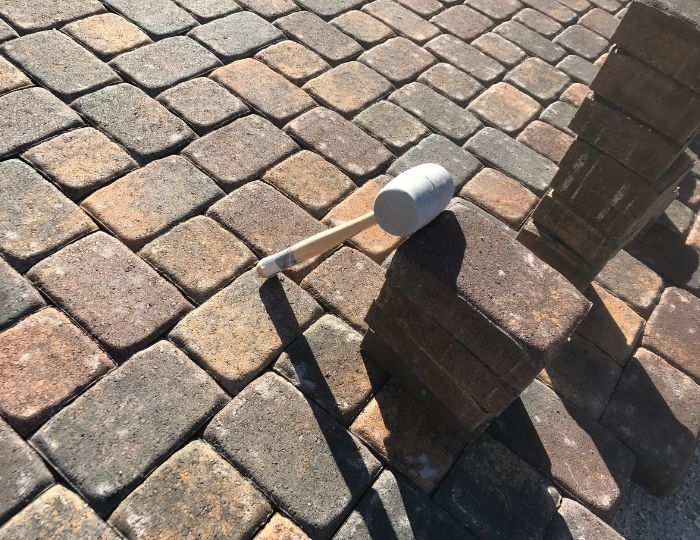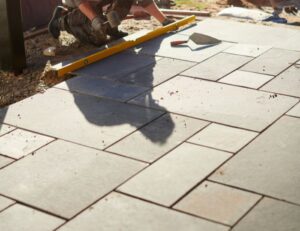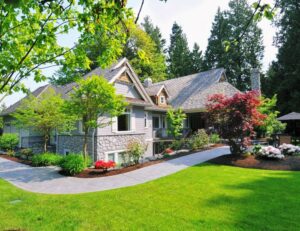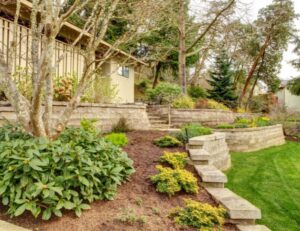When it comes to outdoor design, many homeowners are familiar with the term landscaping, but fewer fully understand what hardscaping includes. As people start planning patios, walkways, or driveways, a common question comes up: Are pavers considered hardscaping? The short answer is yes—and understanding why can help you design a more cohesive, durable, and beautiful outdoor space.
Hardscaping plays a foundational role in landscape architecture. From brick pavers and natural stone to concrete slabs and decorative blocks, hardscaping refers to the permanent, non-living structures that give your yard form and function. In this blog, we’ll break down how pavers fit into the world of hardscaping and why they’re one of the most versatile and valuable materials in modern outdoor design.
Defining Hardscaping: More Than Just Stone
Before we dive into pavers specifically, let’s clarify what hardscaping really means. Hardscaping is the structural aspect of landscape design—the “hard” elements that contrast with the “soft” elements of plants, soil, and mulch. Hardscape features are built to last and include materials like:
-
Stone or brick patios
-
Walkways and stepping paths
-
Driveways and entrances
-
Retaining walls
-
Fire pits and fireplaces
-
Outdoor kitchens
-
Pergolas, decks, and fencing
These elements serve practical purposes—such as directing foot traffic, preventing erosion, or creating usable space—as well as aesthetic ones. They provide texture, form, and visual interest, and often define the flow and function of a landscape.
Pavers are one of the most common and essential components in hardscaping.
So, Are Pavers Hardscaping? Absolutely.
Pavers are pre-formed building units made of concrete, brick, stone, or other materials. They are designed to interlock or be laid in patterns to form solid surfaces. Whether used for patios, walkways, driveways, or pool decks, pavers are a classic hardscaping material because they serve both functional and decorative purposes.
Some reasons why pavers are considered hardscaping include:
-
Durability: They are designed to withstand traffic, weather, and wear.
-
Structure: Pavers form hard surfaces that serve as permanent landscape features.
-
Design: Pavers come in a wide variety of colors, shapes, and textures that allow for creative layout options.
-
Low Maintenance: Once installed, paver systems are long-lasting and easy to care for.
So yes, whether you’re designing a winding garden path or a grand brick driveway, you are hardscaping when you use pavers.
Types of Pavers and Their Hardscaping Applications
One of the biggest advantages of pavers is their versatility. There are many types of pavers used in hardscaping, each with unique characteristics:
-
Concrete Pavers: Cost-effective and available in a variety of colors and finishes. Often used for patios and driveways.
-
Brick Pavers: Offer a timeless, classic look. Great for traditional garden paths and charming front walkways.
-
Natural Stone Pavers (Flagstone, Bluestone, Travertine): Luxurious and durable—ideal for high-end patios and pool decks.
-
Permeable Pavers: Environmentally friendly option that allows water to drain through, helping with stormwater management.
The material you choose depends on your design goals, budget, and how you intend to use the space. At Salinas Landscaping, we help clients select the right paver material for both performance and appearance, ensuring your investment lasts for decades.
Why Pavers Are a Smart Hardscaping Choice
Pavers are more than just attractive—they’re smart. Unlike poured concrete slabs, pavers are modular and flexible. This means they are less likely to crack over time and easier to repair if one section becomes damaged. They can be lifted and replaced individually without disturbing the surrounding area.
Additional benefits of using pavers in hardscaping include:
-
Improved Curb Appeal: A professionally installed paver driveway or patio can instantly elevate your property’s look.
-
Increased Property Value: Homebuyers appreciate the style and durability of paver hardscaping.
-
Custom Design Options: Mix and match colors, patterns, and textures to create a truly unique look.
-
Safety: Pavers offer a non-slip surface and can be installed with proper grading for water drainage.
Whether you’re building a patio for entertaining or a stylish new walkway to your front door, pavers are a hardscaping solution that balances form and function beautifully.
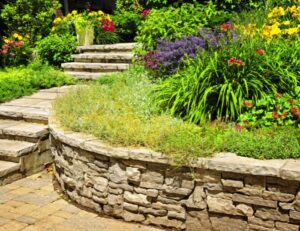
Expert Paver Installation Matters
Hardscaping with pavers is not a DIY job for most homeowners. Proper excavation, grading, and base preparation are critical to the longevity and performance of any paver project. Without the right installation techniques, pavers can shift, settle unevenly, or experience drainage problems.
That’s where Salinas Landscaping comes in. Our team of skilled hardscape professionals ensures that every layer—from the crushed stone base to the final joint sand—is installed with precision. We don’t just lay pavers—we build outdoor spaces that stand the test of time.
Get Started on Your Hardscaping Project Today
If you’ve been wondering whether pavers are hardscaping, now you know—they absolutely are, and they’re one of the best materials you can choose for building beautiful, lasting outdoor spaces.
At Salinas Landscaping, we specialize in hardscape design and installation, including brick paver patios, driveways, walkways, and more. With over 20 years of experience, we bring craftsmanship, creativity, and care to every project. Contact Salinas Landscaping today to get started! Let’s design and build the outdoor space you’ve always wanted—starting with pavers that perform and impress.

